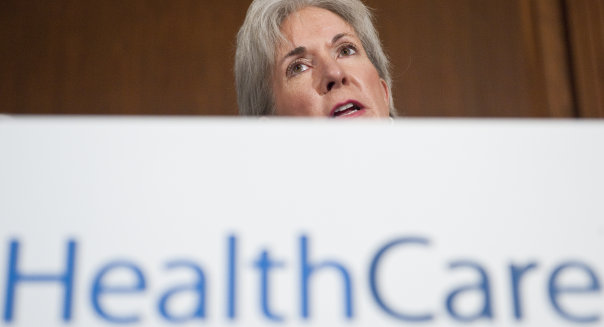
WASHINGTON — About half the people who now buy their own health insurance — and potentially would face higher premiums next year under President Barack Obama’s health care law — would qualify for federal tax credits to offset rate shock, according to a new private study.
Many other people, however, earn too much money to be eligible for help, and could end up paying more.
The estimate, released Wednesday by the nonpartisan Kaiser Family Foundation, tries to answer one of the biggest remaining questions about the impact of Obama’s law on American families: Will consumers wince — or even balk — when they see the premiums for the new plans?
The study found that 48 percent of families currently buying their own coverage would be eligible for tax credits next year, averaging $5,548 per family, or 66 percent of the average cost of a benchmark “silver” policy offered through new state insurance markets.
“About half of the people won’t be paying the sticker price,” said Gary Claxton, director of the health care marketplace project at Kaiser, an information clearinghouse on the health care system. “The people who get help will get quite a lot of help.”
“Many, but certainly not all, of the people who don’t get tax credits will pay more,” he said. “How much more will be a function of a lot of different things.”
For example, some people who don’t qualify for tax credits may get jobs that offer coverage, added Claxton, a co-author of the study. And the bottom line on premiums may not be clear until sometime this fall, after the Health and Human Services Department releases rates for more than 30 states where the federal government is taking the lead setting up new insurance markets for individuals and small businesses.
People can enroll starting Oct. 1, and coverage becomes effective Jan. 1. Most people currently covered by employer plans aren’t affected.
The law is likely to increase the sticker price for individually purchased coverage next year for several reasons:
Insurers will have to cover people with pre-existing medical conditions, whose needs are costlier to provide for.
Policies must provide certain standard benefits, including prescription drugs, mental health and substance abuse treatment and rehabilitative services.
Policyholders’ annual out-of-pocket costs will be capped.
So far, premiums reported by a number of individual states have been coming in lower than initially projected by the Congressional Budget Office. But they are higher — according to industry and consultants — than what people now typically pay for individual plans, which tend to be bare-bones coverage.
However, the law also will pump in billions of dollars in federal tax credits to help the uninsured pay premiums — and ease cost increases for many who are currently buying the skimpy individual policies. The money will go directly to the insurance plan, and policyholders will pay the difference — a discounted sticker price, in effect.
The tax credits, available on a sliding scale based on family income, will be offered to people who don’t have access to affordable coverage through their jobs and buy policies through the new state markets.
Those making between 100-400 percent of the federal poverty level — between $11,500 and $46,000 for an individual and $23,550 and $94,200 for a family of four — are eligible for some level of help. Families on the low end of the scale will pay 2 percent of their income for a benchmark plan, while those on the upper end will pay 9.5 percent.
It’s expected that a clear majority of customers in the new markets will be eligible for tax credits. That’s because the pool will also include uninsured people, who tend to have lower incomes than those who can currently afford to buy their own coverage. The share will vary from state to state.
HHS Secretary Kathleen Sebelius recently estimated that in Texas, as many as 9 in 10 people buying coverage in the new market will get a break on costs.
People with individual coverage they buy themselves represent a small sliver of those with private insurance, only about 5-6 percent. That’s expected to grow significantly under Obama’s law, which will require most uninsured Americans to get coverage.
Estimates of the number of people who currently have individual coverage range as high as 19 million, but Claxton said the Kaiser study used a smaller estimate of about 10 million. It’s based on an ongoing government survey that some researchers regard as more accurate.
Copyright 2013 The Associated Press. All rights reserved. This material may not be published, broadcast, rewritten or redistributed.


Leave a Reply